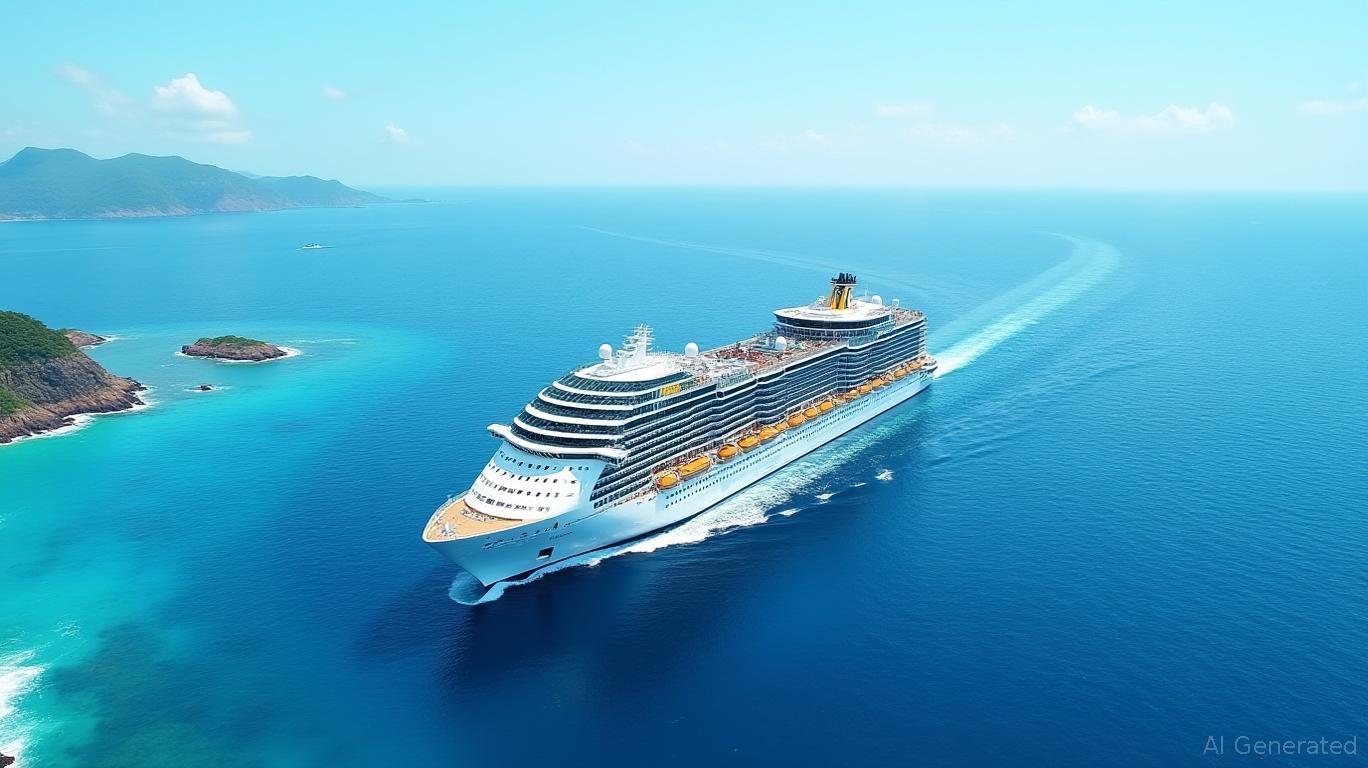Royal Caribbean's Leadership Transition: Navigating Continuity and Innovation Toward a New Horizon
The cruise industry is at a crossroads, balancing post-pandemic recovery with the imperative to innovate. Royal Caribbean Group's upcoming leadership transition—scheduled for Q4 2025—offers a case study in how strategic continuity and bold innovation can coexist. As Jason Liberty steps into the dual roles of CEO and Chairman, succeeding Richard Fain, the question isn't whether the ship will change course, but how it will navigate uncharted
while retaining the compass set by decades of success.The Pillars of Continuity: Legacy and Governance
Fain's 37-year tenure as Chairman and CEO built Royal Caribbean into a leisure titan. His vision for megaships, premium experiences, and global expansion laid the groundwork for today's opportunities. Liberty's transition is not a rupture but an evolution: Fain remains on the board, ensuring institutional knowledge flows into future decisions.
Equally critical is the appointment of John Brock as Independent Lead Director. Brock's experience—steering Coca-Cola Enterprises and InBev—brings a governance rigor that complements Liberty's operational focus. This dual structure balances agility with oversight, a necessity as Royal Caribbean pursues high-stakes ventures like fleet expansion and land-based resorts.

Innovation in Motion: From Megaships to Hybrid Ventures
Liberty's strategy hinges on expanding Royal Caribbean's footprint in both sea and land. The Icon-Class Star of the Seas, debuting in August 2025, exemplifies this ambition. With 2,834 cabins and cutting-edge sustainability features, it sets a new benchmark for onboard experience. Meanwhile, the Oasis-Class Utopia of the Seas adds 595,000 lower berths, underscoring the company's commitment to scale.
But Liberty isn't just doubling down on megaships. The Royal Beach Club Paradise Island, set to open in December 2025, represents a bold pivot: a private, all-inclusive resort tailored to cruise passengers. This land venture reduces reliance on traditional ports and positions Royal Caribbean as a holistic leisure provider. Analysts note that such hybrid strategies could capture higher margins by controlling end-to-end experiences.
Sustainability is another pillar. Royal Caribbean has pledged to integrate eco-friendly designs into its fleet, aligning with evolving consumer preferences. The “Discovery Class” ships—smaller vessels targeting niche markets—add agility, ensuring the company can pivot to emerging trends without overextending.
Financial Fortitude and Shareholder Value
The numbers tell a compelling story. Q1 2025 results saw revenue rise 7.3% to $4 billion, with non-GAAP EPS of $2.71—7% above estimates. The 109% load factor and 13.9% gross margin yield highlight strong demand and operational efficiency.
Liberty's Perfecta Performance Program targets a 20% CAGR in adjusted EPS by 2027, driven by premium onboard spending and cost discipline. The $5 billion in 2025 capital investments are focused on high-return ventures like megaships and land resorts.
Despite volatile market conditions, Royal Caribbean's disciplined capital allocation—prioritizing high-teens returns on invested capital—suggests resilience. A 1.5% dividend yield, paired with a history of growth, appeals to income investors while signaling confidence in cash flow stability.
The Investment Case: Prudent Risk, Bold Reward
For investors, Royal Caribbean's transition offers a mix of stability and growth. The stock's valuation currently sits below peers, reflecting both near-term macroeconomic risks (e.g., interest rates, oil prices) and optimism around long-term leisure demand.
Bullish catalysts include:
1. Fleet Modernization: New ships will drive occupancy and premium pricing.
2. Land Ventures: The Royal Beach Club could redefine profitability in ancillary services.
3. Leadership Synergy: Liberty's operational edge paired with Fain's legacy and Brock's governance creates a robust decision-making framework.
Risks remain, particularly execution of large-scale projects and external factors like fuel costs. Yet the Perfecta Program's focus on margin expansion and the hybrid land-sea strategy provide cushions against volatility.
Conclusion: Charting a Course for the Next Decade
Royal Caribbean's leadership transition is less about change and more about elevation. By embedding Fain's legacy into a modernized structure and pairing it with bold innovations like megaships and land resorts, Liberty positions the company to capitalize on a rebounding leisure sector. For investors, the combination of a disciplined financial strategy, high-growth projects, and a proven leadership team makes RCL a compelling long-term play—one that balances the reliability of continuity with the thrill of innovation.
Consider Royal Caribbean Group as a strategic holding for investors seeking exposure to the leisure recovery, but remain mindful of macroeconomic headwinds and execution risks.

Comments
No comments yet